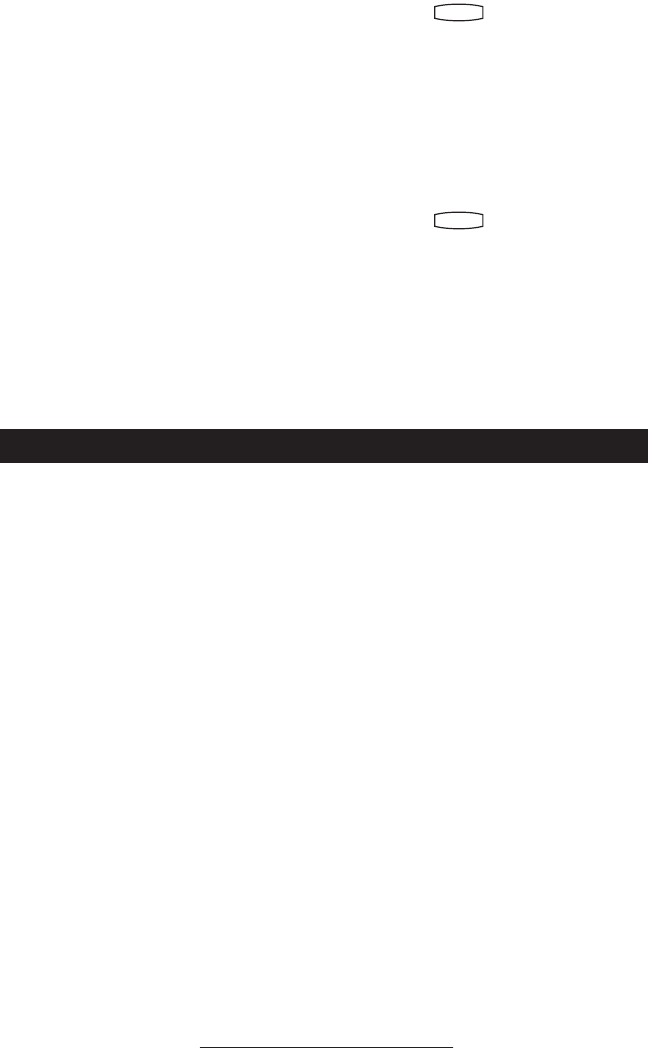
21
Display shows “Network Link is Down”
Verify LAN cable is properly connected:
• Check termination at the switch or
hub (furthest end of the cable from
the phone).
• Check that the switch or hub is
operational (flashing link/status
lights) or contact your System
Administrator.
• Press
Hold
De
l
Se
l
Conference
1 3
DEF
5
JKL
4
GHI
6
MNO
8
TUV
7
PQRS
9
WXYZ
0
OPER
*
#
2
ABC
Hold
De
l
Se
l
Directories
Services
Call Lists
Buddy Status
My Statu
s
Redial
Menu
Message
s
Do Not Disturb
ABC
21
DEF
3
54
MNOJKLGHI
6
TUV
87
WXYZ
9
OPER
PQRS
0
followed by Status
and Network. Scroll down to verify
LAN port is Active.
• Reboot the phone to attempt re-
registration with the server.
No Response from Feature Key Presses
Verify phone is in active state:
• Make a call to the phone to check
for inbound call display and ring-
ing as normal. If successful, try to
press feature keys within the call to
access Directory or Buddy Status
for example.
• Press
Hold
De
l
Se
l
Conference
1 3
DEF
5
JKL
4
GHI
6
MNO
8
TUV
7
PQRS
9
WXYZ
0
OPER
*
#
2
ABC
Hold
De
l
Se
l
Directories
Services
Call Lists
Buddy Status
My Statu
s
Redial
Menu
Message
s
Do Not Disturb
ABC
21
DEF
3
54
MNOJKLGHI
6
TUV
87
WXYZ
9
OPER
PQRS
0
followed by Status
and Lines to confirm line is actively
registered to the server.
• Reboot the phone to attempt re-
registration to the server.
Part 15 Rules
This device is compliant with Part 15 of
the FCC Rules. Operation is subject to the
following two conditions:
1. This device may not cause harmful
interference, and
2. This device must accept any inter
-
ferences received, including inter
-
ference that may cause undesired
operation.
Safety and Compliance
Class B Digital Device or Peripheral
Note: This equipment is tested and com-
plies with the limits for a Class B digital
device, pursuant to Part 15 of the FCC
Rules. These limits are designed to pro
-
vide reasonable protection against harmful
interference in a residential installation.
This equipment generates, uses, and can
radiate radio frequency energy and, if not
installed and used in accordance with the
instructions, may cause harmful interfer-
ence to radio communications. However,
there is no guarantee that interference will
not occur in a particular installation. If
this equipment does cause harmful inter-
ference to radio or television reception,
which can be determined by turning the
equipment off and on, the user is encour
-
aged to try to correct the interference by
one or more of the following measures:
1. Reorient or relocate the receiving
antenna.
2. Increase the separation between the
equipment and receiver.
3. Connect the equipment into an out
-
let on a circuit different from that
to which the receiver is connected.
4. Consult the dealer or an experience
radio/TV technician for help.


















